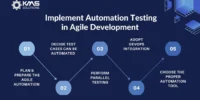As voice technology continues to revolutionize how we interact with applications, ensuring the reliability and functionality of voice applications is paramount. Voice Technology Validation (VTV) plays a crucial role in guaranteeing a seamless user experience. Let’s explore some quick tips to effectively test your voice applications and ensure they meet the highest standards! ️
Understanding Voice Technology Validation
Before we dive into the tips, let’s establish why Voice Technology Validation is essential. As voice applications become more prevalent, users expect accurate and responsive interactions. VTV focuses on testing the intricacies of voice recognition, natural language processing, and overall user experience in voice-based applications.
Quick Tips for Testing Voice Applications
- Diverse Speech Data: Incorporate diverse speech data into your testing process. This includes variations in accents, tones, and speech patterns. Ensuring your voice application can comprehend a range of voices enhances its inclusivity and accessibility.
- Contextual Understanding: Test your voice application’s ability to understand contextual cues. A robust voice application should grasp the context of a conversation, providing more accurate and meaningful responses. This is particularly important for applications with complex user interactions.
- Noise Simulation: Mimic real-world scenarios by simulating background noise during testing. Voice applications should perform well in various environments, from quiet spaces to bustling cafes. Testing for noise resilience ensures a consistent user experience regardless of the surroundings.
- Performance under Load: Evaluate your voice application’s performance under heavy loads. As user traffic increases, ensure that response times remain optimal, and the application can handle concurrent voice requests efficiently. This is crucial for applications expected to scale with a growing user base.
- Security and Privacy: Prioritize security and privacy testing. Voice applications often handle sensitive information. Verify that user data is securely processed, and implement measures to protect against potential vulnerabilities such as voice spoofing or unauthorized access.
Challenges in Voice Technology Validation
Despite the advancements in voice technology, there are challenges in Voice Technology Validation. Accents, dialects, and different speaking styles can pose difficulties for accurate voice recognition. Additionally, handling ambiguous or vague commands remains an ongoing challenge in voice application testing.
The Future of Voice Technology Validation
Looking ahead, the future of Voice Technology Validation involves advancements in machine learning algorithms for more accurate voice recognition, improved natural language understanding, and enhanced contextual awareness. As the technology evolves, so too will the testing methodologies to ensure the highest standards of performance.
Conclusion
Testing voice applications is a dynamic process that requires attention to detail and an understanding of the complexities of human speech. By incorporating diverse speech data, testing for contextual understanding, simulating real-world conditions, evaluating performance under load, and prioritizing security, you can validate the reliability and functionality of your voice applications. Embrace the challenges, stay ahead of the curve, and deliver voice applications that truly resonate with users! ️








